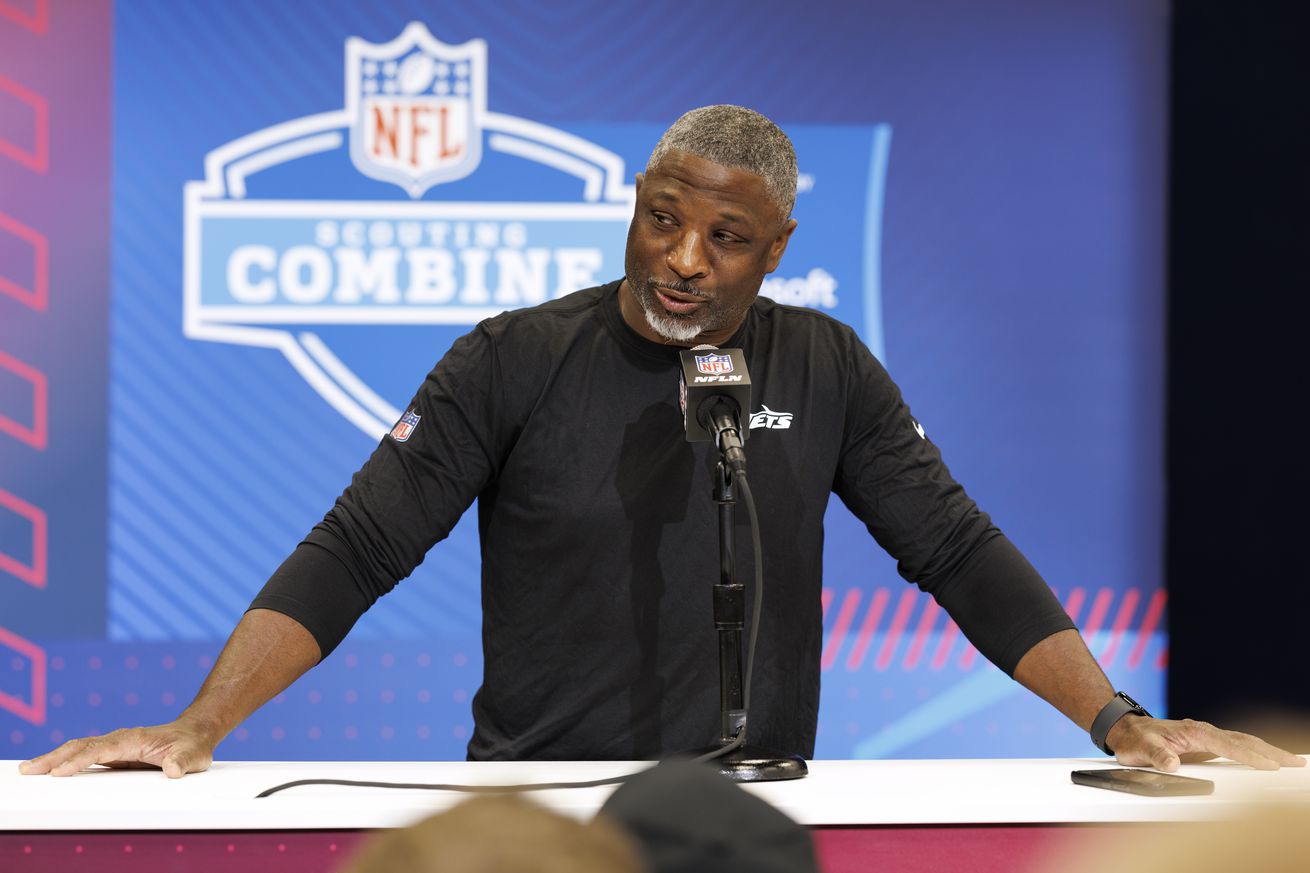
Do the Jets have another regime that doesn’t value analytics?
It comes as no surprise to anyone who has frequented this website for the past few years that I am a “data person.” What that means is that I think the numbers behind football are very cool and I typically trust those more than my eye test.
The reason that I feel that way is because the whole point of data is simply to put numbers to what you should be seeing. Do you think a player is very strong? If so, he should probably be able to do well on the bench press. Is there a wideout who you think catches every ball thrown his way? If so, his catch rate should be high. Is there a cornerback who you think allows a ton of touchdowns? If so, his touchdowns allowed should be high. To me, that general idea of “matching” is the entire point of analytics in any sport. It isn’t intended to do anything more than confirm that what we think we’re seeing is, in fact, rooted in at least some degree of fact. To me, that’s very valuable because human beings are notoriously biased and swayed by irrelevant factors.
New York Jets head coach Aaron Glenn does not see that same value based on a recent press conference. Specifically, Glenn was asked about the speed of recent third round cornerback Azareye’h Thomas, who ran a rather uninspiring 40 (and 20) yard dash that is below average for a cornerback.
Azareye’h Thomas is a CB prospect in the 2025 draft class. He scored a 8.11 #RAS out of a possible 10.00. This ranked 501 out of 2644 CB from 1987 to 2025.
Got a bit of a bump with the official splits.
https://t.co/rz4QCJ6wfx pic.twitter.com/0F3UNmBStt
— Kent Lee Platte (@MathBomb) March 29, 2025
Admittedly though, that may not matter much. Glenn explained this quite well, positing that they weren’t worried about his speed because he could see on tape that Thomas was fast.
Aaron Glenn talks about Azareye’h Thomas’ play speed versus his stopwatch speed:
“Just looking at the player and seeing how they play on the field, that’s more enticing to me than watching a guy run in underwear at the Combine.” pic.twitter.com/z7k9ZIM7sQ
— Jets Videos (@snyjets) April 26, 2025
There is data to support that idea! Wide receiver Cooper Kupp is an easy example. He ran a poor 40 yard dash, but still succeeded in part because he played so fast. The difference in what the Los Angeles Rams did and what the Jets did is that the Rams knew that to be the case because data supported it. Again, all data does is match what our eyes are telling us. If a player is fast in game then there are tools, namely GPS tracking, that can test that.
Glenn was asked directly about whether they confirmed that eye test and his response seemed to imply not as evidenced by the below excerpt from the press conference.
ESPN’s Rich Cimini asked #Jets HC Aaron Glenn about new rookie CB Azareye’h Thomas’s 4.58 40-yard dash at his Pro Day.
“I would tell you this, a while ago I really started to look at play speed a little bit more than time speed. I had a guy Brian Branch last year that ran like… pic.twitter.com/NBXHHIeNPG
— Paul Andrew Esden Jr (@BoyGreen25) April 26, 2025
As detailed in the “Show more” section of that tweet, the interaction went as follows:
AG said watching players run on tape means more to him than watching players run in “underwear at the Combine.” “Football is football. He plays the brand that we want to play.”
@Connor_J_Hughes followed up by asking about the GPS chips and if that’s how they compare play speed versus time speed.
AG said people can use that, but ultimately for him it’s just about watching the tape.
“There is a lot of people that they say they run 4.5 or 4.6 then when you see them run against 4.3 receivers and they’re in their hip pocket, that tells you right there that they can run. So I don’t really need that to see a player run. You just watch the tape and that tells you everything that you need to know.”
To me, this paints a pretty clear picture of the value that Glenn (and one would guess the front office that decides on draft picks) places on analytics. Either a) he didn’t like the results of that data and therefore didn’t place any value on it because it misaligned with his read on the situation or b) they never looked at it at all. In either case, this doesn’t paint a picture of a draft process that is going to be data driven under this leadership group.
Moreover, there is a bit of a logical disconnect here. If you don’t think combine speed is real, then does a cornerback running with a guy with good combine times really mean that he was guarding a fast player? To me, this logic doesn’t hold up, but we’re going to have to hope that the eyes of the decision makers are as accurate as they seem to believe they are if the team is to succeed in this draft and the ones to come.